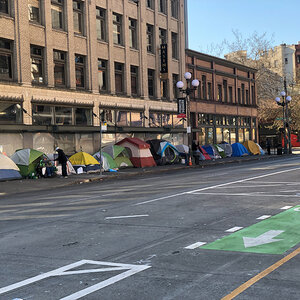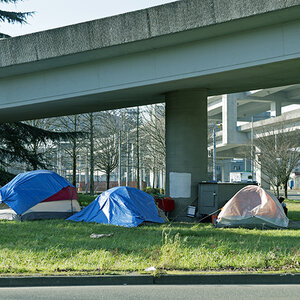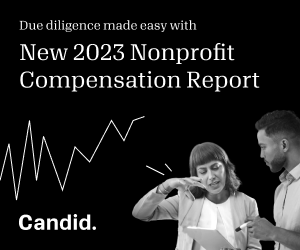Falling through systemic gaps: The invisible plight of youth experiencing homelessness

Before the COVID-19 pandemic hit, 4.2 million young people in the United States were homeless. According to the Voices of Youth Count initiative at the University of Chicago’s Chapin Hall, one in thirty adolescents between the ages of 13 and 17 and one in ten young adults between the ages of 18 and 25 had experienced some form of homelessness in any given twelve-month period.
You might ask: Where are these youth? They are, quite literally, right in front of us. They’re blending in near college campuses or at bus stations. They’re moving from one friend’s couch to another’s. In too many cases, they’re exchanging security for exploitation. Often, youth experiencing homelessness don’t want to be found. They’re running from families that have abused them and systems that have failed them. By the time they’re on the streets, their young lives have been mired in loss.
The “experience” of youth homelessness is not one that is equally shared. LGBTQ+ youth are more than twice as likely as their peers to report homelessness. Black or African-American youth face an 83 percent higher risk of being homeless. Over a third of homeless youth were in the foster care system, and 35 percent of homeless youth have experienced the death of at least one parent or primary caregiver.
While our nation’s attention has understandably been on older adults with the highest risk of mortality from COVID-19, recent reports illustrate untold stories of its impact among young people: alarming levels of school absenteeism, hunger, housing insecurity, and mental health challenges. When the COVID wave recedes, it’s bound to leave far too many young lives devastated in its wake.
It’s especially hard to imagine what the past year and a half has meant for a population of homeless youth who relied on couches that likely became less welcoming, shelter beds that were reduced in number due to social distancing, and virtual school environments that required hotspots found in coffee shops and libraries that were closed or restricted. It’s also hard to know the level of vulnerability for the nearly one hundred and twenty thousand children in the U.S. who lost a parent or primary caregiver during the first fourteen months of the pandemic. Similarly uncertain is the fate of thousands of youth who have aged out of the foster care system since March 2020.
Long before the pandemic, however, youth at risk of homelessness were falling through gaps in systems that were never set up with them in mind.
For example, a National Institutes of Health study found that 46 percent of youth exiting foster care will experience homelessness at least once by age 26. Given this fact, why wouldn’t we incorporate life skills training into services for youth in foster care? Why not hold the system accountable for exit plans as young people age out? Why not address the fact that fewer than 3 percent of young people in foster care earn college degrees — a key driver of increased earning potential over a lifetime? But the Department of Children and Family Services was a system built to protect children, not to teach, educate, or raise them.
If we know — and we do — that education is the number-one correlate for youth homelessness, why wouldn’t we develop specialized public school programming to identify and keep unstably housed youth in school? And why wouldn’t we aggressively support homeless high school students who are 87 percent more likely than their stably housed peers to drop out? But schools were built to educate, not to be social service providers.
If we know — and we do — that youth who are homeless have the same developmental needs as every other youth, why wouldn’t we look to youth development programs rather than the adult shelter systems to model homeless youth programs? Why wouldn’t we recognize that sheltering a young person in an adult facility is neither helpful nor hopeful? The adult shelter systems were never built to serve youth.
There’s never been an integrated approach to serving homeless youth. Instead, we try to hold systems accountable that don’t have the infrastructure, mandate, or resources to serve young people at greatest risk of homelessness. With these very young people in mind, we need to broaden the scope of systems intended to help youth transition into adulthood.
For many years, we at Liberty Mutual Foundation have focused on this invisible and vulnerable population of young people who lack the basic safety and security necessary to build their futures, fulfill their dreams, and thrive.
Despite the daunting numbers and worsening circumstances for homeless youth, there are heroes stepping to fill those gaps. And their approaches and models warrant scaling.
- HopeWell, one of New England’s leading nonprofit providers of intensive foster care and supports to youth who’ve aged out of care, has been piloting a transitional housing program, My First Place™ (MFP), to address the effects of young people exiting foster care straight into homelessness. Through MFP, young people are supported as they take on increased responsibilities such as finding work, paying rent, and building independence. HopeWell has also been exploring long-term tutoring models. This work is critical. Every time foster care youth change schools, they lose approximately six months of academic advancement — and they typically switch schools four to eight times before aging out.
- YouthHarbors works to ensure that students who are homeless and alone are safely housed so they can concentrate on school. Mentors stay with these youth and help them gain the skills and tools they need to thrive both academically and personally.
- Bridge Over Troubled Waters offers young people paths forward built on trusted relationships — from a street outreach van, to emergency shelter, to transitional housing, to housing for students. They guide youth toward stability, self-sufficiency, and independence; recognize that young people who have experienced homelessness have also experienced trauma; and understand that a roof over a young person’s head is an important step, but still only a first step. Importantly, Bridge centers youth voice, partnering with young people, asking them directly: What are your dreams? And how can we work together to help you live those dreams?
Before the pandemic, homeless youth were falling through big holes in systems that were never set up with their unique needs and circumstances in mind. As the dangerous second-order effects of COVID strike homeless youth, we need a collective sense of urgency to fill in these systemic gaps. In the meantime, only rays of hope shine through gaping holes.
Melissa MacDonnell is president of Liberty Mutual Foundation.






